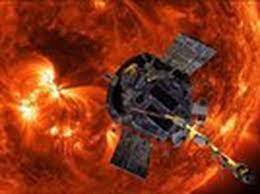Supra Thermal & Energetic Particle Spectrometer:

India’s solar mission, Aditya L1, has started studying energetic particles in the solar wind from space with the help of a device named Supra Thermal & Energetic Particle Spectrometer (STEPS).
- It is a sub-system of the ASPEX (Aditya Solar Wind Particle Experiment) payload on the spacecraft.
- The key aim of STEPS is to study the environment of energetic particles from the spacecraft’s position on the L1 point till it will function.
- The data from STEPS in the long term will also help us understand how space weather changes.
- It comprises six sensors, each observing in different directions and measuring supra-thermal and energetic ions.
- The data collected during the Earth’s orbit helps scientists analyse the behaviour of particles surrounding the planet, especially in the presence of its magnetic field.
- It was developed by the Physical Research Laboratory (PRL) with support from the Space Application Centre (SAC) in Ahmedabad.
Aditya L1:
- Aditya (which in Sanskrit means sun) is a planned coronagraphy spacecraft to study the solar atmosphere (solar corona, – outermost part).
- It has been designed and developed by ISRO and various other Indian research institutes.




